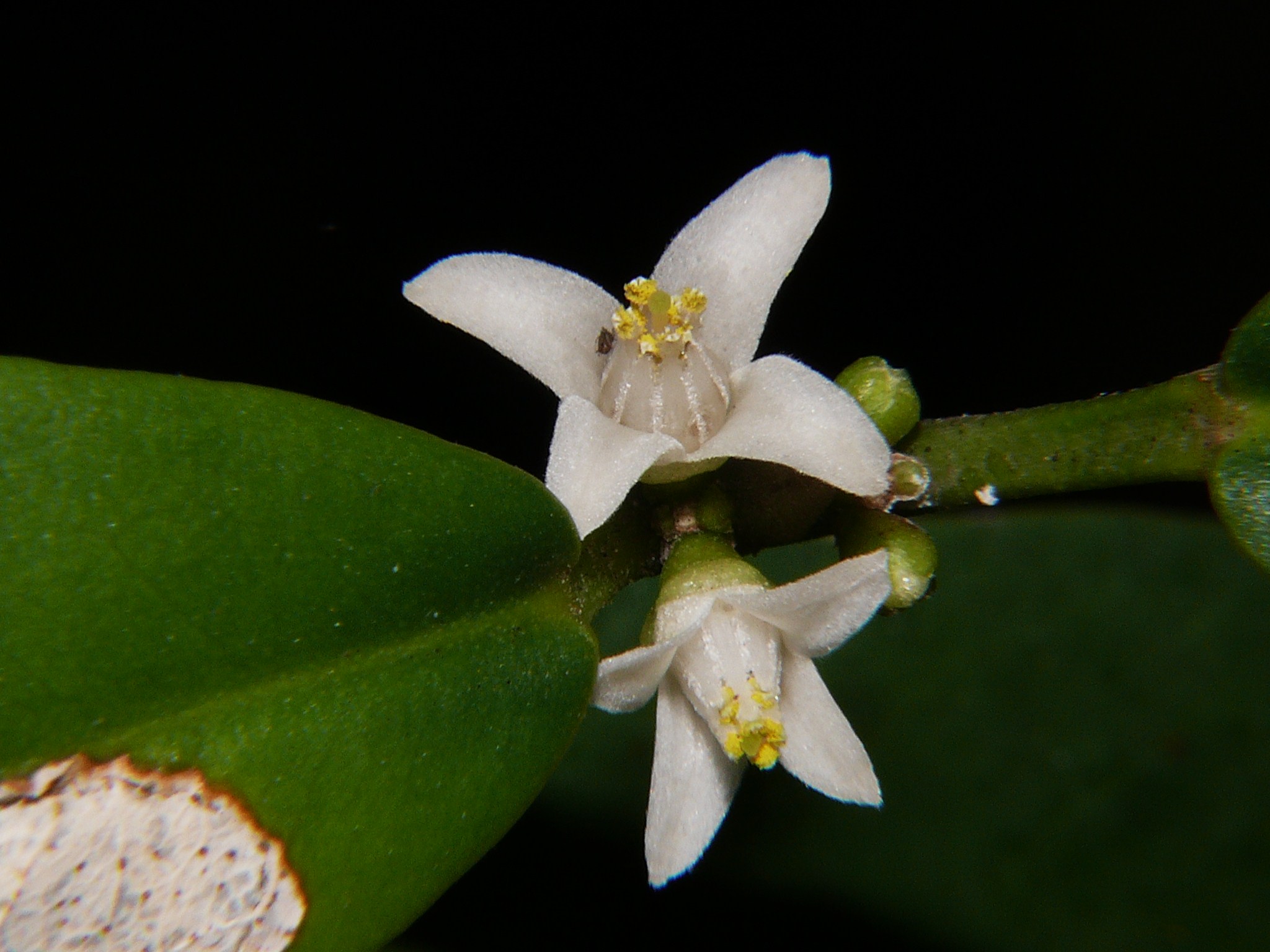Medicosma obovata
(No Common Name)
Conservation Status
Queensland State: Vulnerable
Australian Government: Vulnerable
Available to download
All the information on this page is available as a pdf download
Species and status overview
Medicosma obovata is a small tree that is endemic to our region. It is found in Dryander National Park and on private lands near Dryander Creek and the upper Gregory River in vine forest on the foothills.
Description
Medicosma obovata is a shrub or small tree growing to around seven m. It has white, egg shaped flowers with leaves, which are paired, and up to 12.5 cm long, with conspicuous oil dots. The flowers are found on the angle between the leaf and the stem and are usually in clusters of two to four, either on very short stalks or with no stalks at all. The petals are white, 4.5–5 mm long, and covered in soft, dense hairs on the lower side.
The species occurs in vine forests as an understorey tree or shrub at altitudes of between 80–700 m above sea level. Flowers have been recorded from January, and from May to July, and fruits have been recorded from May to July.
Medicosma is a genus of about 22 species of shrubs and trees in the family Rutaceae, occurring from Australia to New Caledonia and New Guinea.
Conservation concerns
Medicosma obovata has no known threats other than its limited distribution. As a result, any threats that occur to Medicosma obovata are likely to have a serious impact. However all stages of this species life cycle are threatened by fire and it is not known if they have the ability to resprout. Given the very small habitat distribution, fire could easily destroy the entire population. Previous logging in M. obovata habitat has promoted disturbance and the invasion of Lantana camara. Lantana has the ability to alter habitat and species composition and could out compete this species if left unmanaged.
What can I do?
- Be aware of the area in which this species exists, and minimise activities that may cause adverse impacts at these sites, such as inappropriate burning or clearing.
- Control Lantana camara on your property.
Photo credit Steve Pearson
